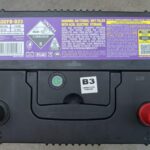The landscape of automotive diagnostics has undergone significant evolution, particularly with the introduction of the Unified Diagnostic Services (UDS) protocol. For professionals and enthusiasts relying on tools like Ross-Tech VCDS, understanding UDS is crucial for effective vehicle servicing and repair. This article delves into the intricacies of UDS protocols and how Ross-Tech VCDS expertly navigates this modern diagnostic era.
What is UDS?
UDS, or Unified Diagnostic Services, is a standardized communication protocol used in automotive diagnostics, officially known as ISO 15765. Developed by major European automakers and their suppliers, UDS aimed to create a common diagnostic “language.” The intention was to streamline the development process for component manufacturers like Bosch, reducing the need for highly customized solutions for different car brands like Volkswagen and Mercedes. While theoretically, this standardization could have broadened the usability of diagnostic software across various brands, the reality with ISO 15765 (UDS) took a different turn.
Instead of simplifying diagnostics universally, UDS introduced an additional layer of complexity. Interpreting crucial diagnostic data like fault codes and measuring values now requires specific translation files unique to each controller type. In pre-UDS systems, a fault code like 00532 for “Supply Voltage B+: Signal too Low” maintained a consistent meaning across different vehicles, from a 1993 VW Golf to a 2006 Audi A8L. Scan tools could readily interpret these codes without needing car-specific knowledge.
However, with UDS, this is no longer the case. A fault code’s meaning is now inaccessible without the correct translation file. This shift presents a considerable challenge for scan tool manufacturers like Ross-Tech, as maintaining an extensive library of these specialized files for every control module type becomes essential.
Ross-Tech VCDS and UDS: Working Together
When you connect Ross-Tech VCDS to a control module utilizing the UDS protocol, the software immediately indicates this shift. You’ll notice “Protocol: UDS” displayed in the top left corner of the VCDS screen, signaling that you are communicating with a newer, UDS-based system.
One of the most apparent changes is the absence of traditional “Measuring Blocks.” These numbered groups, once standard for accessing live data (like Group 115 for boost pressure in older gasoline engines), are no longer applicable in UDS modules. Instead, VCDS offers the “Advanced Measuring Values” function. This feature allows you to select from a comprehensive list of available parameters to measure, providing a more flexible and detailed approach to live data diagnosis.
Explore VCDS Advanced Measuring Values in detail
However, the functionality of “Advanced Measuring Values” hinges on the presence of a ROD (ROD – ODX Data) file – the crucial translation file for that specific control module type. If the “Advanced Measuring Values” button appears grayed out in VCDS, it signifies that the necessary ROD file is missing.
In such cases, the first and most crucial step is to ensure you are running the latest version of Ross-Tech VCDS. Ross-Tech continuously updates VCDS with the latest ROD files to expand vehicle coverage and diagnostic capabilities.
Download the latest version of Ross-Tech VCDS
For users requiring the absolute latest updates and features, especially for newer vehicle models, Ross-Tech often provides Beta versions of VCDS. Checking for and utilizing the Beta version can sometimes resolve ROD file availability issues.
Access Ross-Tech VCDS Beta Downloads
If, after updating to the latest or Beta VCDS version, you still encounter a missing ROD file and see a message similar to ‘ No ASAM data for: “EV_ECM14TFS01104E997016B” (VW37) ‘, the next step is to send Ross-Tech an AutoScan of the vehicle. This AutoScan provides Ross-Tech with the necessary data to potentially create the missing ROD file and incorporate it into future VCDS updates, benefiting all users.
ROD Files and How You Can Help (Or Not)
In older, pre-UDS control modules, users encountering modules without label files could contribute by sending PLA and PLB files. These files assisted Ross-Tech in incorporating documentation for missing modules in subsequent VCDS releases.
Learn more about contributing Control Module Maps
Unfortunately, with UDS and ROD files, this type of user contribution is no longer feasible. ROD files are fundamentally different; they are essential for VCDS to even interpret basic data from UDS modules. Without a ROD file, VCDS cannot read or understand the data stream, rendering PLA or PLB files irrelevant in this context.
Therefore, while user assistance is still greatly valued, the most effective way to contribute to expanding UDS module support in VCDS is by sending a complete AutoScan.
Instructions on performing a VCDS AutoScan
It’s important to note that UDS modules still utilize label files for functions like Coding and Security Access. If you encounter a UDS module lacking a label file, similar to ROD files, sending PLA or PLB files will not aid in its creation. Instead, submitting an AutoScan remains the most helpful action, providing Ross-Tech with the necessary information to develop comprehensive support for that module in VCDS.
Conclusion: Embracing UDS with Ross-Tech
The transition to UDS protocols has undeniably introduced complexities to automotive diagnostics. The necessity for specialized translation files (ROD files) for each control module represents a significant shift from earlier, more straightforward diagnostic methods. However, Ross-Tech remains at the forefront of diagnostic innovation, diligently working to ensure VCDS provides comprehensive coverage and user-friendly access to UDS-equipped vehicles.
By consistently updating VCDS with the latest ROD files and actively engaging with user-submitted AutoScans, Ross-Tech continues to empower automotive professionals and enthusiasts to effectively diagnose and service modern vehicles. Staying updated with the latest VCDS version and understanding the nuances of UDS protocols are key to navigating the evolving landscape of automotive diagnostics with confidence and precision.
